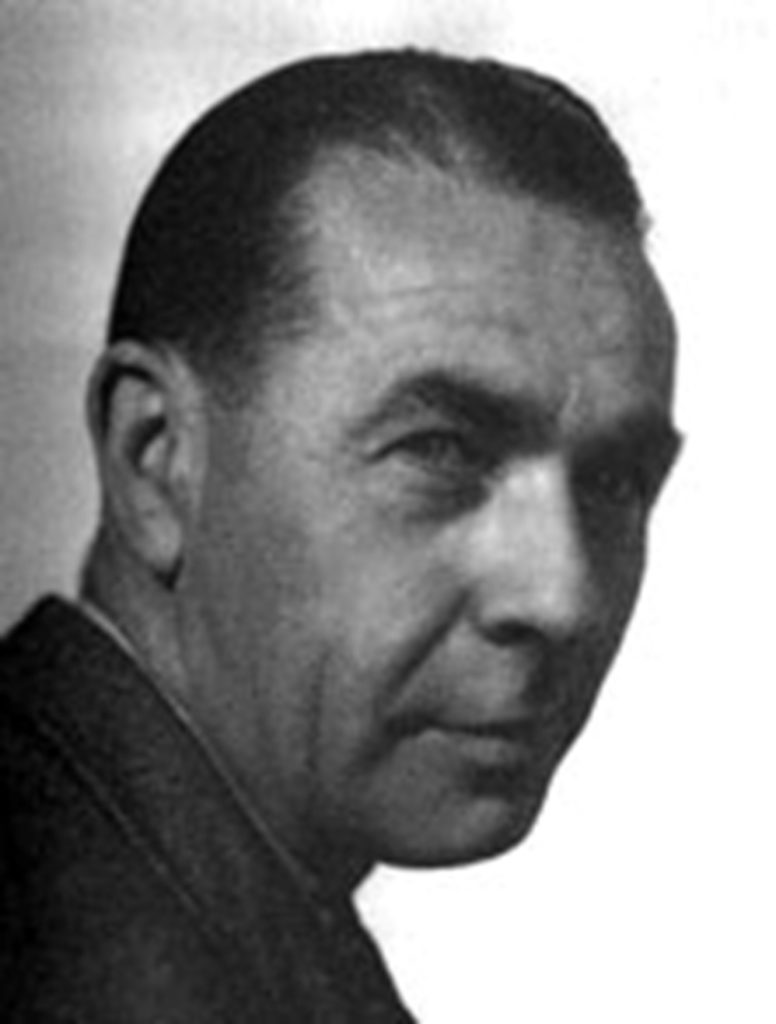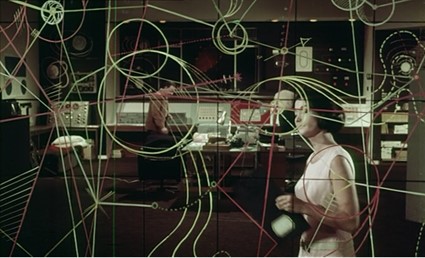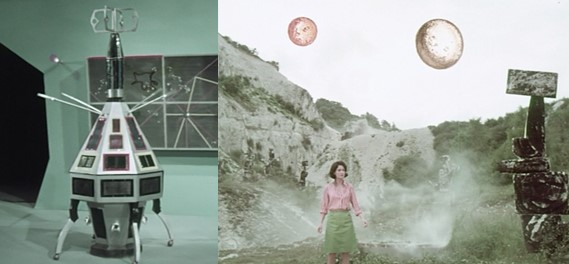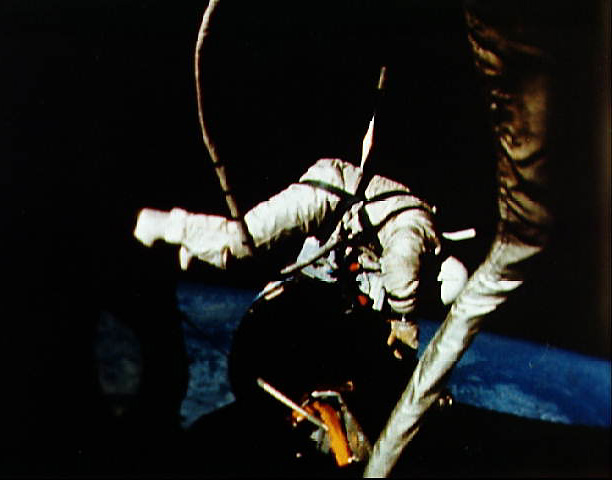
by Gideon Marcus
Between the tragic aftermath of this year's twin space disasters (Apollo 1 and Soyuz 1) as well as the dramatic results from the Lunar Orbiter and Surveyor Moon explorers, it's easy to forget the amazing things being done in Earth orbit.
So here's a little news grab bag of some flights you may have missed over the last several months (and even years, in some cases):
Moscow calling
Two years ago, the Soviets joined the world of comsats with the orbiting of their first Molniya satellite. Launched into an eccentric orbit that takes them up to geosynchronous altitudes but then swooping down to graze the Earth, they work in pairs to facilitate transmissions across the 11 time zones of the Soviet Union.

It's an impressive system–half a ton of satellite broadcasting at 40w of power, more than twice that of the Intelsat "Early Bird" satellites. Unfortunately for the Soviets, it's also been a balky system. Both of the first two satellites stopped working within a year, Molniya 1B failing to keep station in space. It's a bad thing when your comsat moves out of position! This is something more likely to happen in an eccentric orbit than in a more-stable geosynchronous orbit where a satellite goes around the Earth once every 24 hours, remaining more or less stationary (except for a little figure eight over the course of the day) from the perspective of the ground observer. Worse, because the Molniyas scrape so close to the Earth, it doesn't take much to send them careening into the atmosphere, which happened to 1B March 17, 1967.
Still, the Soviets prefer their odd orbit because it's ideal for their purposes (giving coverage to Eurasia) and, I suspect, requires less booster power. And it still carries the satellites high enough to return photos like this one, shot by Molniya 1A last year–the first all-Earth photo ever:

Molniya 1C was launched on April 25 last year, Molniya 1D on October 20. They were replacements for their non-functioning companions. But Molniya 1C may well have given up the ghost, too. Molniya 1E was launched on May 24, apparently to replace it.
May they solve their teething problems sooner rather than later!
A Pair of Imps
Out beyond the Earth's magnetic field is the sun's domain. High energy plasmas (the "solar wind") and our star's magnetic field fill the vacuum of interplanetary space. Not very densely, to be sure, but with profound effects on the planets and offering clues as to the nature of the stellar furnace that creates them.
It is not surprising that NASA has devoted so many satellites to understanding and mapping this zone given how many spacecraft (including the upcoming Apollos) will travel through it. Explorer 18, Explorer 21, and Explorer 28 were all part of the "Interplanetary Monitoring Program" (IMP). The first two have already reentered, and the last just stopped working a couple of weeks ago. Luckily, virtually uninterrupted service has been maintained thanks to the launches of Explorer 33 and Explorer 34!

Explorer 33
Explorer 33, launched July 1, 1966, was supposed to be the first of the "anchored" IMPs, returning data from the orbit of the Moon (which does not have a magnetic field or radiations of its own). Unfortunately, the satellite was shot into space a bit too rapidly to safely decelerate into orbit around the Moon. Instead, it now has an extremely high (270,000 miles perigee!) but eccentric (low apogee) orbit from which it still can return perfectly good science. Indeed, NASA planned for this eventuality.

Explorer 34
The other Explorer, #34, was just sent up on May 24. It is a more conventional IMP and will pick up where #28 left off.
With four years of continuous data, we now have terrific data sets on the Sun through a good portion of its 11-year cycle, including the recent solar minimum. I look forward to a slew of reports in the Astrophysical Journal over the next few years!
Yes, I read those for fun. Doesn't everyone?
Bright Future
If the IMPs exist to monitor the Sun's output, the Orbiting Solar Observatories' job is to directly watch the Sun. Prior to 1967, two of these giant satellites had been orbited: OSO 1 on March 7, 1962, and February 3, 1965. A third launch was made on August 25 of the same year, but it failed.
Sadly, the OSOs haven't quite provided continuous coverage over the last five years. Still they have returned the most comprehensive data set of solar measurements to date. And, as of March 8, the wiggly needles that mark the collection of data are jiggling again: OSO 3 has been returning data from its nine instruments on all manner of solar radiation–including and especially in the ultraviolet, X-Ray, and cosmic ray wavelengths that are blocked from terrestrial measurement by the Earth's atmosphere.

The timing is perfect–the Sun is just entering its period of maximum output. OSO 3 will not only tell us more about the nearest star, it will report on its interactions with the Earth's magnetic field and the space environment in near orbit.
A Meteoric Rise
The Soviets have been awfully cagey about a lot of their launches. Every couple of weeks, another unheralded Kosmos heads into orbit, stays there for a week, then lands. It's an open secret that they are really Vostok-derived spy satellites that snap shots and return to Earth for film development. This is utterly reprehensible–certainly WE would never do anything like that.
But while many of Communist flights have been hush hush, one subset of their Kosmos series has been pretty open: the weather satellite flights of Kosmoses 122, 144, 149, and 156!
The first of the Soviet meteorological satellites went into space on June 25, 1966, broadcasting for about four months before falling silent. For a while, it seemed the Russkies were going to keep the pretty weather photos to themselves, but on August 18 of last year, they suddenly started sharing data over the Washingon/Moscow "Cold Line"–both visibile and infrared pictures, too. It appears the delay was due to the Soviet reluctance to announce a mission until they're sure of its success. It is entirely possible that some of the unexplained Kosmoses before 122 were failed flights.

Kosmos 122
The picture quality was pretty low at first, probably due to the length of the line the data must be sent over. Improvements were made, and the new stuff is great.

Since 122, the Soviets have launched Kosmos 144 on February 28, 1967, Kosmos 149 on March 21 (it reentered on April 7–a failure of its weather-related mission, but it successfully tested the first aerodynamic stabilizer in orbit), and the latest Kosmos, #156, just went up on April 27, 1967. It is my understanding that photos are being regularly shared with the National Environmental Satellite Service (NESS) in Suitland, Maryland. I don't know if these are revolutionizing our view of the planet given our successful ESSA and NIMBUS programs, but it does give a warm glow of international cooperation.
If the nukes fly, at least we'll know if it's nice weather over their targets…
From the Far East into the Drink
The Japanese have been working their darndest to become the sixth space power (after the USSR, US, UK, France, and Italy). Unfortunately, all of their efforts have thus far come up a cropper.
Their Lambda 4S rocket is the first one capable of launching a satellite into orbit, specifically an ionospheric probe with a 52 pound science package. The problem is the vehicle's fourth stage. The truck-launched Lambda 3 has been pretty much perfected, but when the new engine was put at the top of the stack, everything went to hell.

The successful precursor of the Lambda 4S, the Lambda 3
On September 26, 1966, the first Lambda 4S was lost when the fourth stage attitude control failed. The fourth stage didn't even ignite the second time around on December 20. That happened again on April 13 of this year during the third flight.
It looks like Nissan and JAXA engineers will be going back to the drawing board before trying another flight. Maybe 1968 will be the year the Rising Sun joins the rising sun above the Earth…
What's next?
This summer, our eyes will surely turn beyond the Earth to Earth's twin, the planet Venus, for June marks the latest opportunity to send probes to the second planet at a premium on fuel consumption and payload allowance. You can bet we'll be covering Mariner 5 and Venera 4 when they launch!

Testing Mariner 5

![[May 28, 1967] Around the World in 80 Months (May 1967 Space Roundup)](http://galacticjourney.org/wordpress/wp-content/uploads/2022/05/670528earth-672x372.jpg)

![[April 28, 1967] Tempest in a Teacup (<i>The Terrornauts</i>)](http://galacticjourney.org/wordpress/wp-content/uploads/2022/04/Title-card-672x372.jpg)















![[April 26, 1967] Fallen Cosmonaut ( The Loss of Soyuz 1)](http://galacticjourney.org/wordpress/wp-content/uploads/2022/04/Komarov.png)







![[March 20, 1967] Vistas near and far (April 1967 <i>Fantasy and Science Fiction</i>)](http://galacticjourney.org/wordpress/wp-content/uploads/2022/03/670320cover-672x372.jpg)





![[January 28, 1967] "Fire in the cockpit!" (The AS-204 Accident)](http://galacticjourney.org/wordpress/wp-content/uploads/2022/01/Apollo_1-Command_Module-after-fire-465x372.jpg)









![[November 16, 1966] A Grand Finale (Gemini 12)](http://galacticjourney.org/wordpress/wp-content/uploads/2021/11/G-12-mission-patch-672x372.png)













![[September 18, 1966] Soaring Higher (Gemini 11)](http://galacticjourney.org/wordpress/wp-content/uploads/2021/09/Gemini-11patch-2-308x372.jpg)










![[August 26, 1966] Shooting the Moon – and Going Even Further (Lunar Orbiter, AS-202 and Pioneer 7)](http://galacticjourney.org/wordpress/wp-content/uploads/2021/08/lunar_orbiter_1_first_view_of_earth_from_moon-672x372.jpg)



















![[July 16, 1966] Onward and Upward! (Apollo, Australia, and OV)](http://galacticjourney.org/wordpress/wp-content/uploads/2021/07/660705launch4-1-672x372.jpg)






